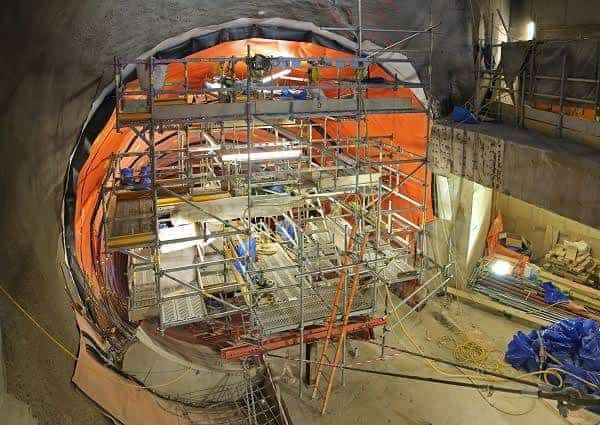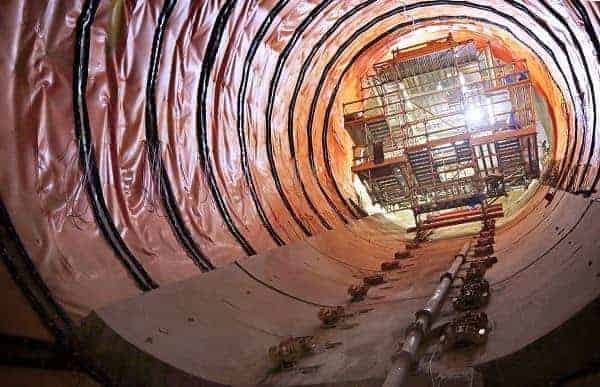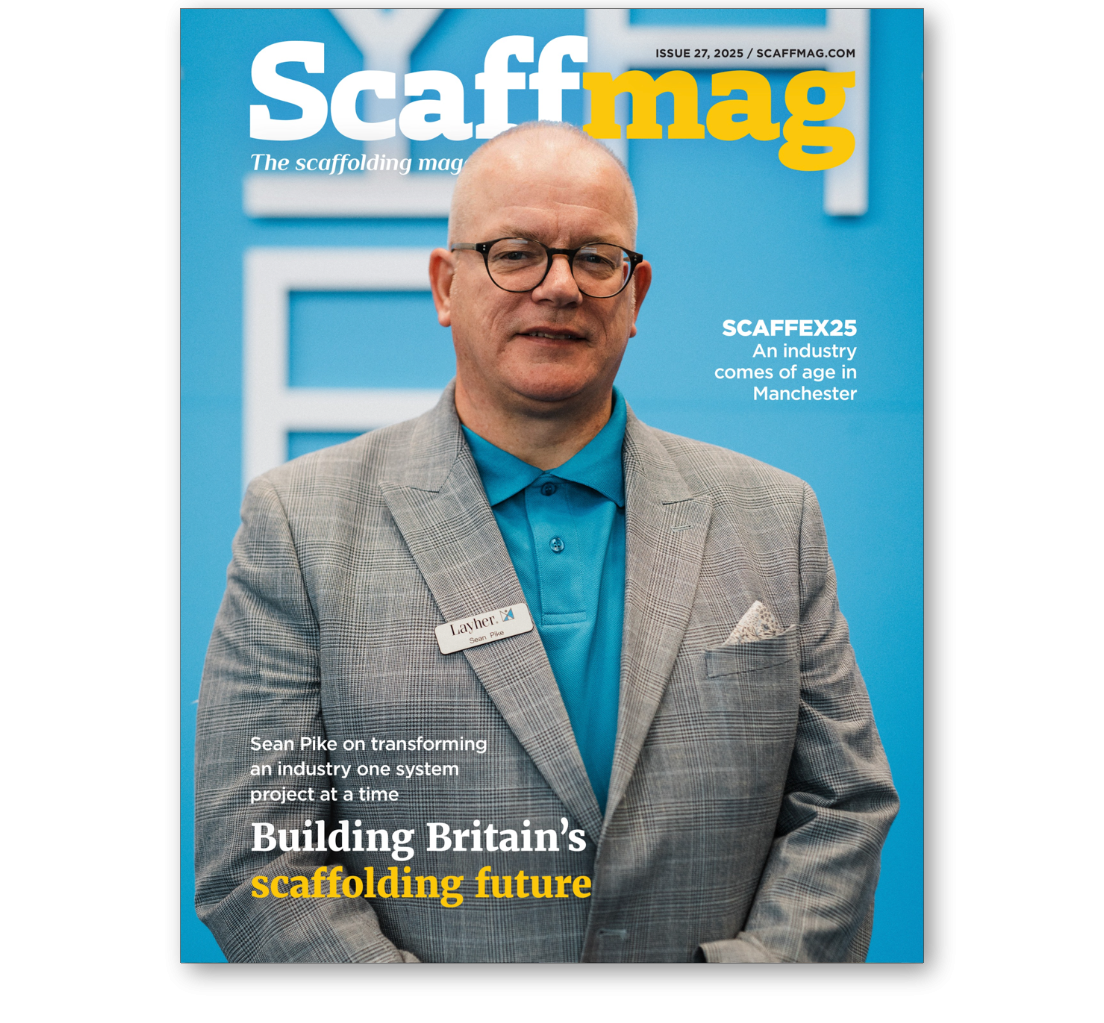PERI Ltd, the UK’s largest manufacturer of scaffolding and formwork, has provided a unique scaffolding system to help the installation of waterproofing lining at a complex escalator shaft at the new Farringdon Station for the Crossrail project. Crossrail is building 42km of tunnels, 10 new stations and improving 30 more. The finished railway will be named the Elizabeth line when it opens in central London in 2018.
After providing an intricate scaffolding system to the tunnel works on the same project, PERI utilised a combination of its Rail Climbing System (RCS), PERI UP scaffolding and heavy duty rollers to provide contractor Bam Ferrovial Kier JV (BFK) with a safe and reliable climbing system for the complicated escalator shaft. The shaft’s 30° incline meant that PERI’s technical design team had to tailor its previous solution used on the horizontal tunnels, while also taking into consideration the various access points and climbing stability.

PERI utilised a tailored mobile scaffold system on heavy duty rollers to complete the task of waterproof lining the tunnel walls. The system was able to move along the tunnel and as this method was successful, PERI and BFK took the decision to use the same system for the escalator shaft providing the safest and most beneficial solution.
The main challenge for PERI’s design team was the 30° incline. To climb up a standard vertical shaft, PERI’s RCS can be used thanks to its ‘climbing shoes’. The RCS shoe, which is normally fixed to the core walls, allows the rail to be guided up the shaft. However, on this occasion, the RCS shoe required some additional support as the weight from the scaffold, and subsequent friction, would have potentially been too heavy. PERI’s technical team decided to deploy the same heavy duty rollers (as used in the tunnel) for the escalator shaft, meaning the scaffold was securely supported and able to move freely.
The heavy duty rollers can withstand more than 250KN of weight, meaning that, when positioned next to the standard RCS shoe, the system would work efficiently and safely. Additionally, the system was pulled up the shaft using an electronic winch, provided by the contractor, which lifted from the RCS system (rather than from the scaffold).
Another significant engineering challenge for PERI was the positioning of the platform levels used to access the surface of the tunnel. As the contractor required access to specific points, PERI had to design the scaffolding to have staggered platforms. For a standard horizontal design, the platforms can be positioned at two metre intervals, however for the 30° angle, the platforms needed to be staggered as the heights on the different angles continuously changed. After extensive research and development of the 3D designs, PERI’s team were able to plan and implement a cost-effective and optimised scaffolding solution that allowed three access stations at different heights along the 7.5m long scaffold.

Nathan Bond, Engineer at BFK, added: “We were happy to once again work with PERI Ltd in the construction of the station. Given the unusual design and incline, we were delighted with the system proposed. The solution was ideal for our needs and the up-front planning, technical expertise and support from the PERI team meant that we were always in safe hands when erecting the system.”
To ensure a smooth process, PERI’s dedicated scaffolding site demonstrator regularly visited the site to help with the assembly of the equipment, providing technical advice throughout the duration of the project. PERI’s equipment was delivered to the site in late March and was on-site for just four weeks. For more information.


